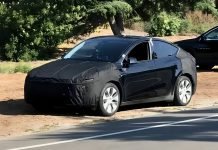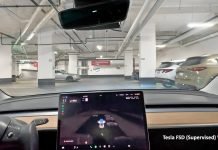Tesla is currently one of the top automobile companies in the world. They do not have the sales to compete with traditional companies like Volkswagen and Toyota, among others, but they have shown immense promise in the last few years. Their upward graph has been evident in the last year or so, and they have the potential to revolutionize the automotive industry. Due to Tesla, many companies, like Volkswagen, have already started working on their own electric prototypes, while others like Hyundai are looking to collaborate with technological companies. Start-ups like Lucid Motors are also making waves in the market, and the electric vehicle sector is booming like never before.
Why Elon Musk Could Start An Aviation Company
Some may call Elon Musk an eccentric billionaire, but there is no denying the fact that he is a visionary. He is the founder of an aerospace manufacturing and space transportation company and an infrastructure and tunnel construction services company. He is also the CEO of Tesla Motors, one of, if not the, largest electric vehicle company in the world.
But apart from all this, he is a man who strives for innovation. His vision of innovative products and services has made him one of the fastest-rising billionaires on the planet. His thirst for excellence is evident through the success of SpaceX. The aerospace company encountered several failures through its early phases but has managed to send NASA astronauts to the International Space Station.
Having shown a lot of promise in the automotive and aerospace industries, it is very much possible that Musk could look at founding an aviation company too. Electric aviation is a severely underdeveloped field at the moment, and this could come as a fresh challenge for him.
The Potential for Electric Aviation
The aviation industry has kind of plateaued when it comes to innovation in recent times. A lot of this is due to financial limitations and environmental regulations. Due to the high costs of fueling an aircraft, regular air travel has become quite expensive. Add to that the fact the fuels used are harmful to the environment too. But is it possible for aircrafts to run on electricity? What are the possible challenges and their solutions that Tesla would face in electric aviation if it does venture into the aviation industry? Let’s have a look.
Tesla’s Plans for an Electric Aircraft
Elon Musk, in a radio interview, had stated that designing an electric aircraft would be an exciting challenge. He mentioned terms like “vertical take-off and landing (VTOL)” and “supersonic jet” in this interview and said that he has talked with some people regarding this as well. A VTOL aeroplane could dramatically reduce the amount of infrastructure needed for airports, and supersonic jets is something that would reduce flight durations.
Musk did mention that it would be incredibly hard for an automotive company to venture into aviation. The amount of regulations currently in place for aircrafts puts a lot of constraints on manufacturing them. He did, however, mention that it is not a financial issue if the company does take the decision. This suggests that Musk, or even Tesla, has looked into the various aspects of aircraft manufacturing, and given it some thought.
While it would be ideal to manufacture a full-capacity aeroplane, many automakers, including Tesla and Hyundai, have presented their views on small aeroplanes that can carry 3-4 passengers. With more and more companies thinking on these lines, Tesla will be kept on their toes if they enter aviation.
Would an Electric Aeroplane be Better than a Conventional One?
The issue with the aviation industry currently is not only one of innovation, but also practicality and finances. Take the Concorde, for example. The supersonic jet was capable of travelling from New York to London in 3.5 hours. But it had its share of troubles too. High costs of fuel drove up the running costs, and these fuels were also harmful to the environment. Since it was capable of running at twice the speed of sound, take-offs and landings would be noisy. Extra care had to be taken during these times. All this resulted in the company stopping the flight soon.
Electric planes would reduce harmful effects on the environment. And with the increasing progress in battery technology, using batteries instead of fuel might become financially viable. By having additional vertical thrusters on the plane along with the conventional horizontal ones, vertical take-offs and landings will become possible.
According to Elon Musk, the estimated power required for such planes is 400 Watt-hour per kilogram. In August last year, the Tesla Battery Research team showed the possibility of manufacturing batteries with 360 Wh/kg. This is quite close to the magic number of 400, but only power is not enough. Longevity is also important, as Musk wrote in a tweet at the time. He said that such batteries will arrive in around 3 to 4 years.
400 Wh/kg *with* high cycle life, produced in volume (not just a lab) is not far. Probably 3 to 4 years.
— Elon Musk (@elonmusk) August 24, 2020
The Challenges for Electric Aviation, and What Tesla is Doing About It
As it stands, batteries are the biggest challenge for electric aviation. High-power batteries are in the R&D phase right now, but that isn’t enough. We need batteries with high life and more capacity for powering an entire plane. While such batteries are not available right now, Tesla is working on more efficient battery packs with higher capacities.
The second issue is the range. An electric car can easily halt at a Supercharger and charge back up during a cross-country road trip. But planes will be travelling thousands of feet from the ground and will require a large battery backup. Many companies are currently focusing on developing smaller battery packs with higher efficiency to use in planes.
Finally, safety is one of the biggest hurdles of electric aviation. Conventional aeroplanes have multiple safeguards on the fuel tanks to ensure safety from fire hazards. They also have provisions to deliberately leak the fuel in case of a fire, to reduce the effect of an explosion. This, however, won’t be possible in electric aviation, as one cannot simply drop the batteries. This would bring in a whole new set of regulations across countries, and all that will take a lot of time to get approved.
Our Opinion
Currently, there are electric planes with very low load-carrying capacity capable of flying for limited distances at low speeds. But isn’t that something we’d thought about electric cars too? Electric aviation is a largely underdeveloped field at the moment. The pace of innovation at the beginning of any new form of technology is slow, but once some standard pieces of tech are designed/manufactured, companies can quickly get around to innovating them according to their needs. It isn’t easy to venture into a field which does not have a lot of research carried out.
But Elon Musk has the resources and manpower from SpaceX and the facilities from Tesla to put together an organization dedicated towards the R&D of electric aviation. Of course, this organization will face a huge number of challenges in the early stages. But then again, who doesn’t? The question still remains though – is electric aviation an impractical dream or a viable vision? The answer will only depend on the advances in battery technology in the coming years.


















